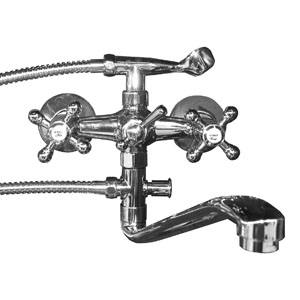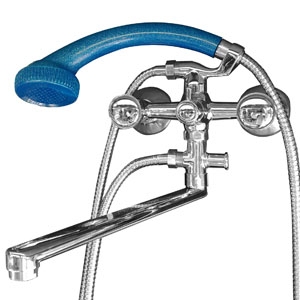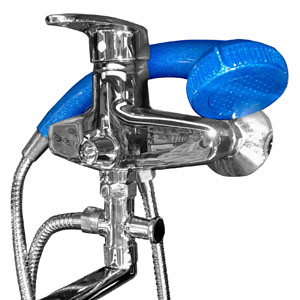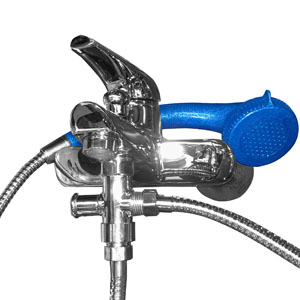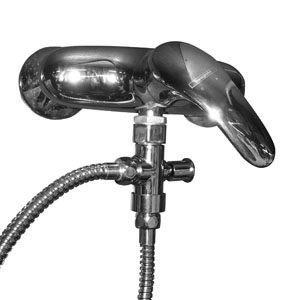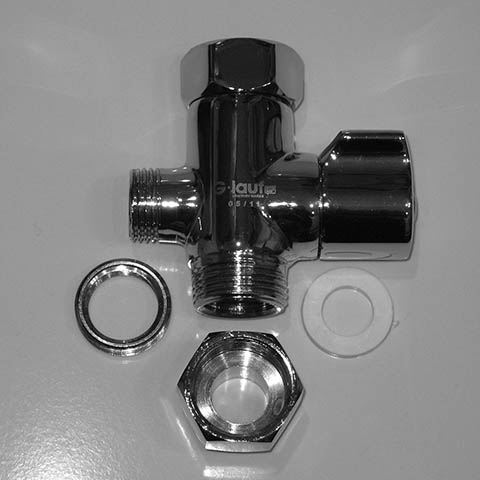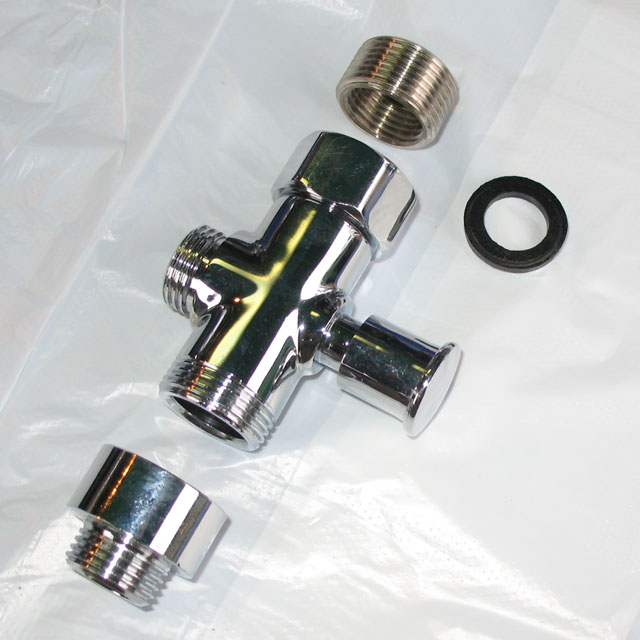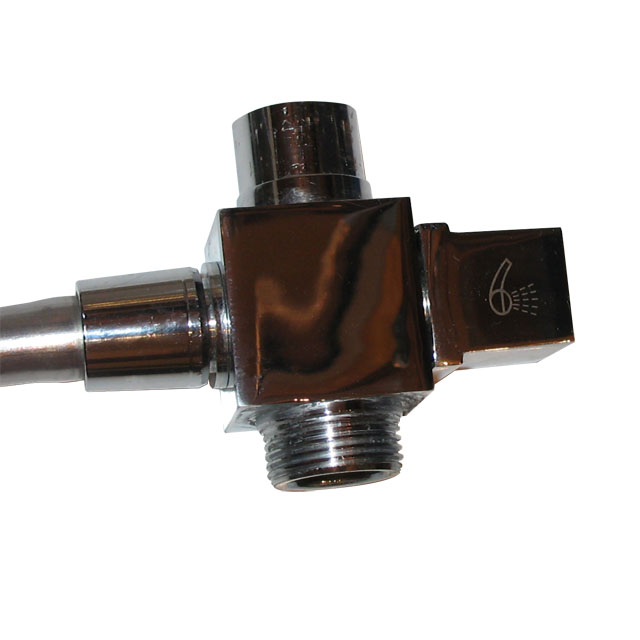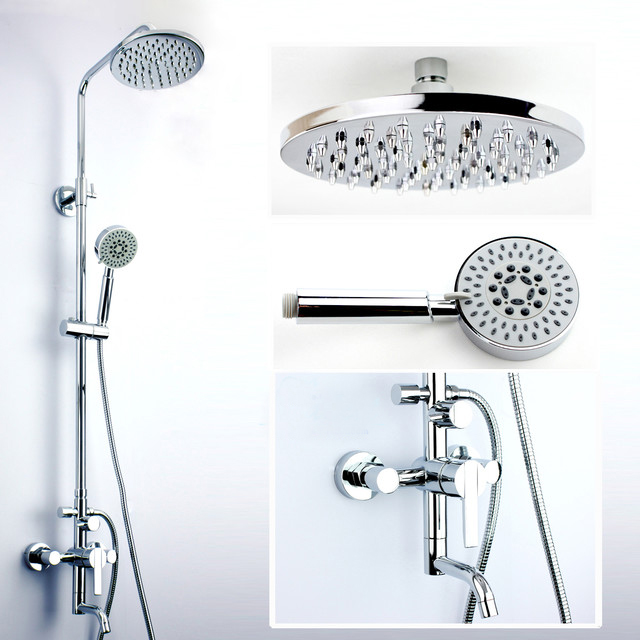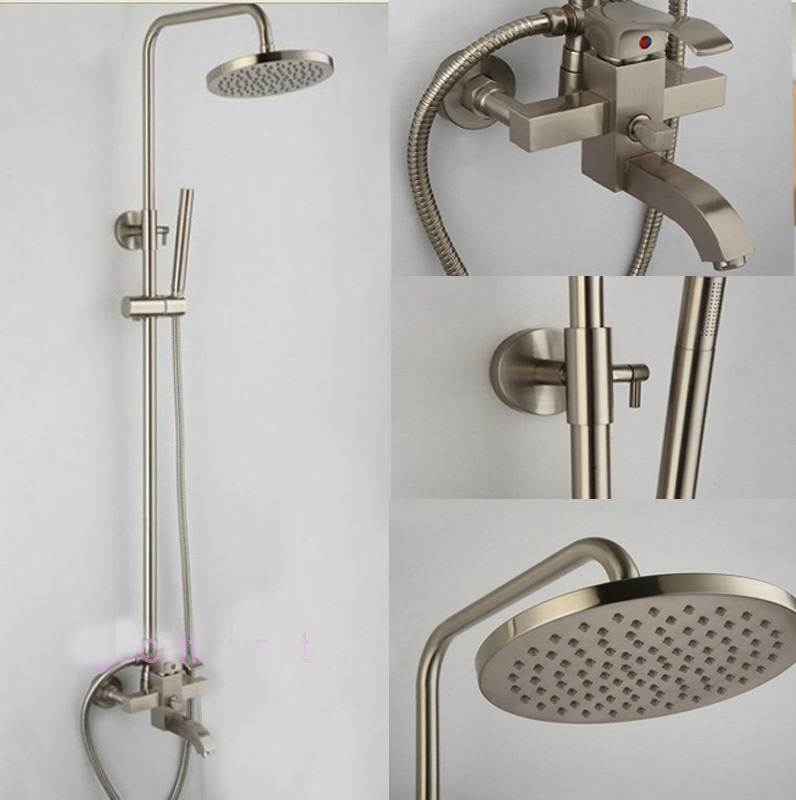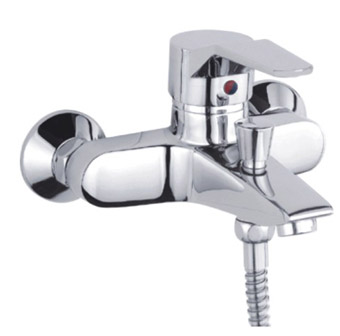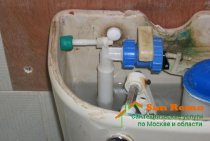Spout repair
We will not single out the problem of water leakage from under the spout nut in a separate article. However, this problem is close, in fact, to the topic of this article and occurs quite often.
There are two types of spouts - round and flat. Leakage of water from under the fixing nuts indicates the need to replace the annular rubber gaskets. To replace them, you need to dismantle the spouts themselves.
For round spouts, the dismantling process is described above in points 5 and 6 of the previous chapter. As a result, you will see two rubber rings on the spout.

Those are the ones that need to be replaced. The photo shows another white ring. It serves to secure the spout when tightening the fixing nut.
For flat spouts, the dismantling process is similar - unscrew the fixing nut and remove the spout. On the inside, two o-rings are also visible, which need to be replaced.

It will be more convenient to do this if you dismantle the inside. For this:
1. Using a suitable size hex wrench, unscrew the inner brass bushing.

2. We take out the bushing together with the nut.

3. Now the sleeve itself can be easily removed from the nut

4. Access to sealing rings is open.
In the end, once again, you should pay attention to the fact that almost all work on disassembling and assembling mixers is done by hand. Wrenches are used only for tightening already twisted connections.
Excessive forces when screwing threads lead to damage, up to the complete destruction of the parts being tightened.
Almost any mixer has such a detail as a diverter. For a simple layman who rarely encountered plumbing, this concept may be unfamiliar. Therefore, we will talk about what a diverter for a mixer is and why it is needed.
What is a diverter in a mixer?
A diverter is a device that is a switch, thanks to which water begins to flow through one or another pipe. There are several types of diverters:
- The first is found in the faucet of each shower: it is he who allows you to switch the water from the tap to the spout or shower head.
- The second one is usually in the kitchen sink and is needed in cases where a dishwasher or washing machine is connected to the faucet in the kitchen. Thus, the diverter simply shuts off the water in the pipe to the device when it is turned off.
- This device, by the way, is also used when a flow filter is connected to the sink. The diverter simply switches the water supply to filtered or unfiltered, as desired.
In general, a diverter is a link between a cartridge in which hot and cold water is mixed, and a spout.
Types of mixer diverters
In general, there are three types of divertors: lever, push-button and exhaust. The latter are the classic look used for single handle faucets in showers. In this case, to switch the water, you just need to pull the handle-button of the diverter up. The lever (or flag) switch simply turns left or right, supplying water to a watering can or spout. Usually this type is used in two-handled mixers. A lever or pull diverter uses a brass ball switch.
More recently, a ceramic divertor has appeared. The inner plates are made of this material. Such a switch has increased reliability due to resistance to water hammer and smooth switching modes.
Well, a hydraulic diverter is used in agricultural and municipal vehicles to distribute a jet of water to several circuits in the pump.
Everyone loves to take a refreshing shower or a relaxing bath. But for sure, most of the inhabitants do not even suspect that they use such a thing as a divertor several times a day. What is it and what is its purpose, what options exist - the answers to all these questions will be found below.
Advantages and disadvantages of a ceramic diverter
Thanks to the inclusion of ceramics in the design, it was possible to significantly increase the life of the device up to 300 thousand switches, which is enough for more than 50 years of daily use. The ceramic diverter is designed for increased loads, including those with strong water hammer. The handle stroke is smooth, the angle of rotation is 180 0 .
The disadvantages include the need to return the lever to its original position manually. If this is not done, then the next time you turn on the water will go out of the pipe on which the rotary sleeve is installed. And surprises in the form of a cold shower at an unexpected moment are not to everyone's liking.
Another factor is the cost of divertor mixers. But given their longevity, it is worth considering this issue philosophically.
Summing up, we can say that the answer to the question: "Divertor - what is it?" — found. And also found answers to questions about the purpose, types of devices and classification of switches. Choosing a bathroom faucet is not an easy task, you need to approach it based on the knowledge gained.
If you frequently change one shower head for another, the thread on the body of the shower (any one - not only Alekseev's soul) may begin to deteriorate, because plastic is softer than metal. Could you suggest a solution to this problem?
The first way is to use a mixer diverter
It is possible to connect two parallel showers to one faucet. To do this, you need to purchase something called mixer diverter
(sometimes called a divertor diver
) - part of the mixer, in which the water switches from the spout to the shower. The cost of such a shower switch is 800 rubles. Made in Italy - "Fiore".
Ready-made examples of installed diverters for mixers:
Connects diverter
between faucet and spout or between faucet and shower outlet. Another shower hose is screwed to it, to which the shower is attached. The diverter has a switch, like a mixer. Install it - 5 minutes of work. And you will have two souls at the same time. It will be very convenient - you turn on exactly the watering can that you need.
Another option that requires a 1/2 thread adapter kit. These are faucets with one 1/2 outlet or simple thermostats, for example for a hygienic shower.
The shower switch (divertor) looks like this. On sale now the most proven option is on the left.
If your pressure is weak, then we do not recommend installing a square diverter - it creates significant hydraulic resistance.
You can also purchase a second shower hose of increased length (standard hoses 1.50) with a built-in sealed bearing - the watering can rotate freely relative to the hose.
We recommend that you use an additional Kaiser or Elghansa chrome-plated shower hose, varying in length from 1.50 to 1.90 m, with a bearing for connection to the diverter. The length of the hose varies depending on the tension. Thanks to the built-in sealed bearing, the hydromassage head will be able to rotate freely relative to the hose, preventing twisting. Made in Germany - "Elghansa" Deutsche Wasser Technologien. Warranty - 5 years.
Installation methods
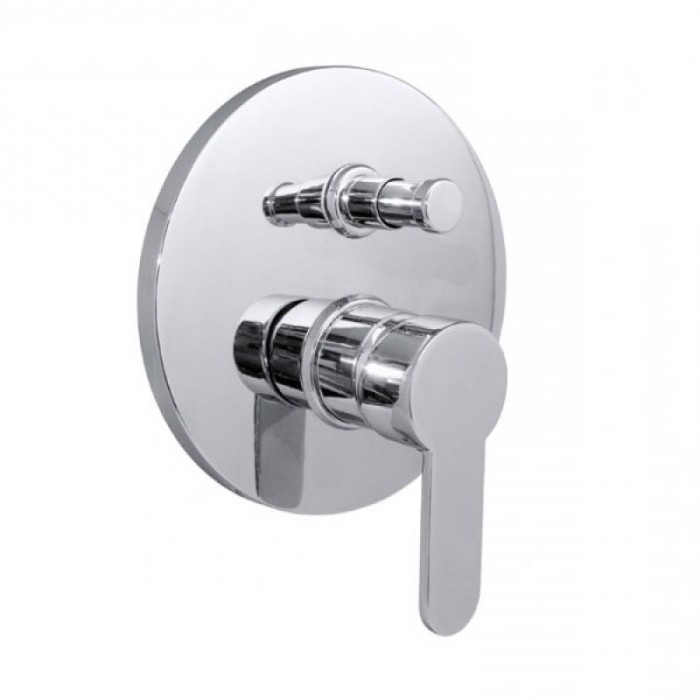
The mechanism is built into the mixer body. It is used in bathroom plumbing, switches water into a watering can or spout through a faucet.
Presented as a separate item that is included in the kit. Used to connect dishwashers or washing machines to kitchen sinks.
For any installation option, the part can be purchased separately.
And you should also know that there are models that can work exclusively in two positions - the direction of the jet is fixed either along one pipe or the other. And there are three-position options, they provide a choice - either switching directions, or a one-time supply of water in both directions at once.
Types of deviators
Water switches come in various designs, there are a lot of varieties, each of which has its own advantages and disadvantages:
- diver;
- diwinder;
- divoter;
- diver.
This mechanism can be either automatic or simple. The automatic exhaust deviator is more common in expensive cartridge faucets. The design may provide for the installation of this mechanism on both a rotary and a cast crane, or it can be a separate independent unit. When the water supply is interrupted, the automatic switch automatically returns to its original position.
A simple push-button deviator is mainly an attribute of inexpensive mixers available to a wide range of consumers.
Material for the manufacture of deviators
Of great importance is the material from which the deviator is made. Usually switches are made from:
- brass;
- nickel;
- alloy of brass and aluminum.
The most practical and durable is considered a deviator made of brass with the addition of aluminum. But not everything is so simple here either. According to the manufacturing technology of brass, the addition of such a toxic metal as lead is necessary. The inclusion of lead in the alloy makes brass more malleable and easier to process, which reduces production costs. Therefore, it cannot be completely abandoned.
Permissible standards of lead in a brass alloy according to GOST Russia - 2.5%, and according to European standards - no more than 1.7%. Such a composition will not affect the quality and toxicity of the metal in any way.
But there is one ticklish moment. Lead is much cheaper, and some unscrupulous manufacturers, trying to reduce the cost of production and reduce the cost of products, exceed the prescribed standards.
If the amount of lead additive exceeds the established norm, the quality of brass is significantly reduced, and accordingly, the mechanism made from it will not only be of poor quality, but also hazardous to health.
When purchasing a deviator for a mixer, be sure to pay attention to the composition of the metal from which it is made. If there is no such information, think about the cost of the mechanism
Perhaps, being seduced by a low price, you will not save money, but will get yourself serious problems.
Features of installation and repair
Each mechanism, like any person, has its own individuality. And in order for it to serve for a long time and in good faith, it is necessary to take into account the features of each type when installing the deviator or repairing it.
Golden type. Switches of this type deteriorate more often than others. The most common problem is water leaking from under the regulator. There are several reasons for this:
- loose axle box or crank screw;
- wear of rubber rings;
- missing or worn gasket.
It is easy to determine the cause of the malfunction. It is necessary to remove the handle and, having opened the water, see where it flows. You can fix the problem yourself, having a screwdriver and an adjustable wrench on hand. Dismantling and replacement of the spool mechanism does not require effort and special knowledge, this is its advantage.
Button type. This is a fairly strong and durable mechanism. It can fail only for such reasons as:
- wear of rubber rings;
- breakage of the switch spring;
- worn ring - stuffing box.
The replacement of this design must begin with shutting off the water with mixer valves. Then you need to disconnect the faucet and shower hose. After that, you can remove the mechanism, clean it of dirt and replace the unusable part. Installation of a push-button deviator also does not require special tools and is available to a non-specialist.
cartridge switch. This mechanism breaks very rarely. The most common cause of a malfunction is the admixture of dirt in tap water. The repair consists in the complete replacement of the deviator. This is easy to do, just unscrew the screw, remove the lever and get the broken cartridge.After installing the new element, calmly assemble the faucet.
One of the main problems of the bath-shower faucet is the breakdown of the shower-spout switching mechanism. Sometimes the only solution is to buy a new faucet. However, in some cases, only the mechanism itself can be changed. How to do it yourself, we will tell in this article.
Symptoms of a breakdown in the shower / spout switching mechanism will be:
- impossibility or difficulty switching the mechanism;
- simultaneous operation of both the shower and the mixer spout in any position of the switch.
Shower / spout switching mechanisms are of the following types:
- eccentric;
- cartridge;
- axlebox;
- ball;
- in the form of a separate block (for some types of one-arm mixers).

Device types
Continuing the search for an answer to the question "divertor - what is it", it is worth considering the main types of shower switches. The ease of use, wear resistance and service life directly depend on the type of diverter.
- Lever, or flag, divertor. Outwardly, it is easy to recognize by the handle, which must be moved from side to side to change the direction of water in the shower and back. Used in two-arm mixers.
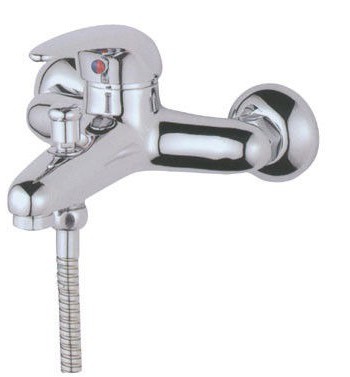
Plumbing with a device of this type is in the lowest price category, because the mechanism quickly fails due to wear of the rubber cuffs. And also limescale quickly fetters the movement of the barrel and either impedes the movement of the lever, or leads to a partial shutdown of the tap.
2. Exhaust diverter. the type of detail is fixed inside the one-handed faucet, the principle of its operation is based on pulling the button to move the water pressure into the shower head. The mechanism consists of a stem and rubber cuffs.
As a rule, the button remains in the upper position due to water pressure, but some models have an additional locking knob that will help out at a low pressure level. To do this, turn the elongated button by 90 0 . Often, users are unaware of this convenient feature and experience inconvenience when the water drops.
When the water is turned off, the shower switch returns to its original position, the divertor lowers the button with the help of a spring.
Diverters of this type are equipped with most mixers in modern plumbing.
3. Push-button (push) diverter. The principle of operation of the mechanism is similar to the exhaust device, but differs in that in the initial position the button remains at the top, if you need to switch to the shower, you need to press the button. Convenience is that it is easier to press than to pull the lever up.
The pluses include a more durable mechanism than a lever switch. But at the same time, both push-button and exhaust diverters are quite susceptible to limescale, which blocks the stem. Due to the poor quality of tap water, they quickly shrink and deform, leading to dripping from a tap or from a shower head.
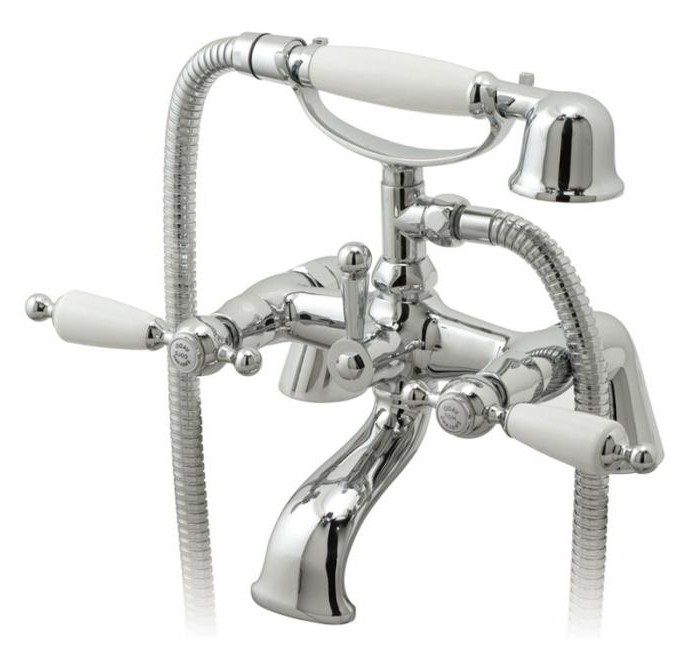
Practical use
The most common place to use a deviator in a faucet is, of course, the bathroom. Today there is no person on earth who would not be familiar with the water switch for a shower or faucet. For the most part, they are installed permanently in ready-made faucets designed for bathrooms.
Kitchen today also can not do without a deviator. It is installed in order to be able to simultaneously use tap and filtered water without installing additional devices.
In the countries of the East, the deviator is placed in such a way that, if necessary, water is supplied not only to the tap or shower, but also to a special device in the toilet bowl, designed for personal hygiene.
Purpose of the device
A diverter is a part in a faucet that allows you to adjust the flow of the jet by changing the position of the internal mechanism, a kind of link between the cartridge in which hot and cold water is mixed, and the faucet. That is, to put it simply, a divertor is a mixer switch that directs water through one or another pipe. They complete everything shower faucets. And they can also be installed in flow-through water filters or when connecting dishwashers to sinks.
Diverter materials are usually identical to those of the mixer itself - brass with a chrome, enamel, nickel or stainless coating, as well as expensive models with ceramic plates.
When choosing a mixer material, it is worth evaluating the expected load, because the enamel version can chip, and an allergic reaction is possible from contact with nickel surfaces. Stainless steel coated faucets work best, but due to the nature of the coating, any streaks, drips and fingerprints are immediately visible on them.
Replacing the switching mechanism of the suffocating
Ball switches are the most reliable, but, unfortunately, not repairable, so if you have a mixer with just such a switching mechanism, and it breaks, then you will have to buy a new one.
For cartridge, axle and eccentric switches, repair work will be as follows:
1. Remove the decorative cap on the shift knob. In some mixers, it is necessary to remove the plug with a wallpaper knife and unscrew the fixing screw that it closed with a screwdriver. In our case, she herself is such a screw. We turn it off.


2. Remove the handle.

3. Under the handle is either a box mechanism or a nut that secures the mechanism (cartridge or eccentric). We turn away.

4. We take out the mechanism. Box or cartridge are taken out entirely. For eccentrics, only one part will be removed - the eccentric itself.

5. To completely dismantle the eccentric switch, it is necessary to remove its inner part. To do this, unscrew the spout nut by hand.

6. Remove the spout down.

7. A removable part of the body will be found under the nut. It will have to be turned off. It is very difficult to do this. Wrap this part with a cloth so as not to damage the chrome coating during the dismantling process, and using a gas (not adjustable) wrench, unscrew this part by the body itself.

8. If you manage to do this, then the inner part of the mechanism will be easily removed from the case. In general, it will look something like this:

On the right - the eccentric part, turns away first, on the left - the inner. If it is not possible to remove the inner part, then you will have to change the mixer.
9. After dismantling, according to the samples received in the store, we buy the necessary spare parts and assemble the mixer in the reverse order of the work described.
To replace a separate switching unit, it must be completely detached from the mixer.
1. Unscrew the shower hose with your hands.


2. Unscrew the top nut securing the mechanism to the mixer body.

3. Remove the mechanism with a spout.

4. Unscrew the spout nut.

5. As a result, we get a switching mechanism.

6. We buy a new mechanism in the store and install it on the mixer.
